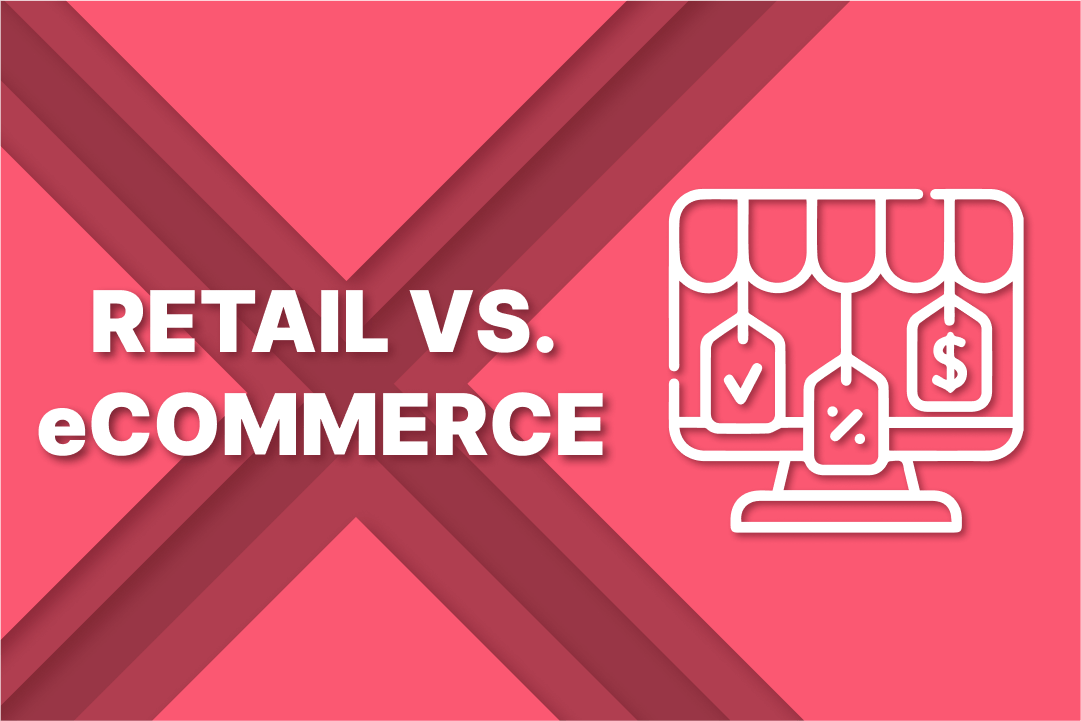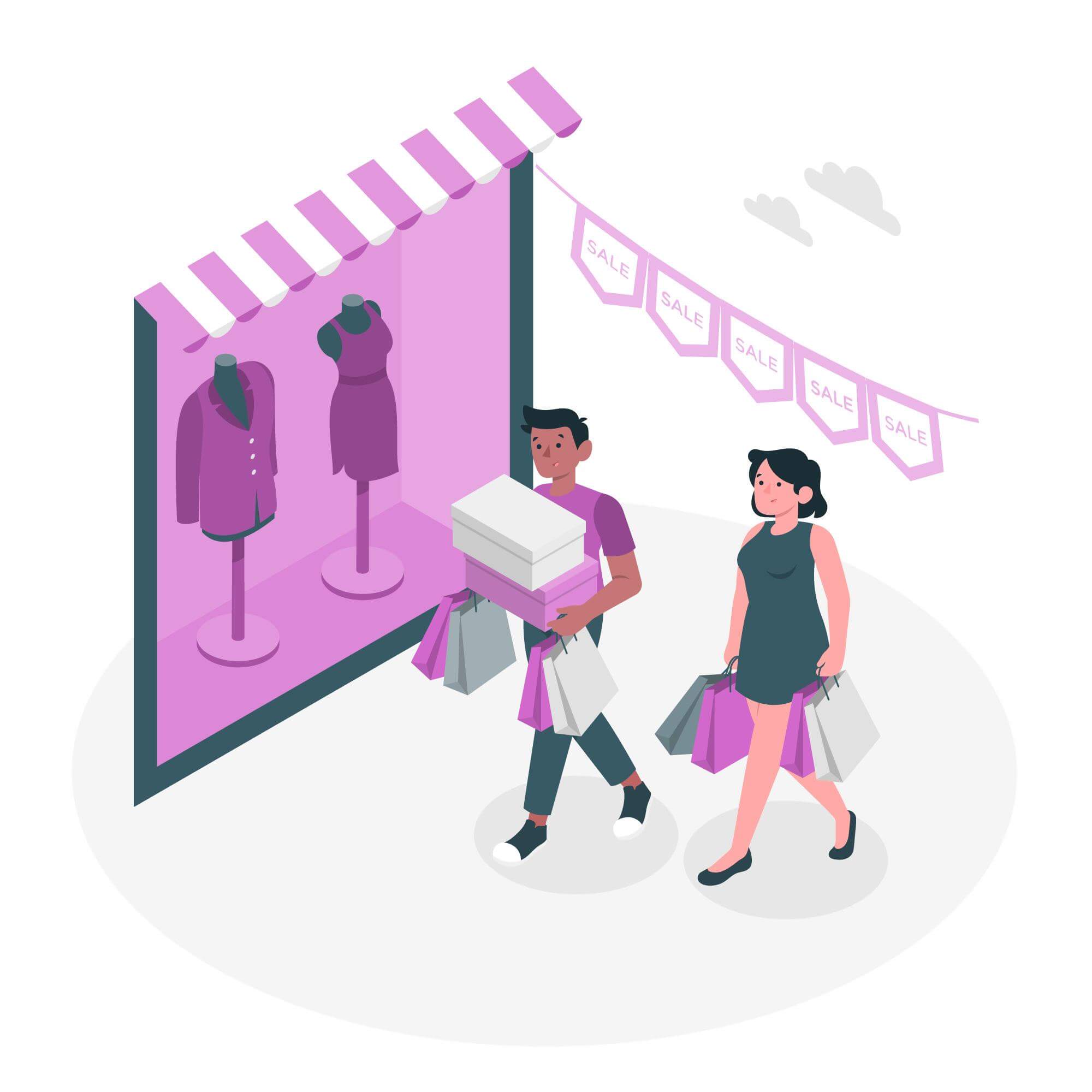
As a merchant, you know the importance of having a strong sales channel to reach and sell to customers. Understanding the differences between retail and eCommerce can be critical to the success of your business, whether you're just starting out or have been in the game for a while.
Retail and eCommerce are two of the most popular sales channels for businesses today.
eCommerce businesses sell products through an online platform such as a website or mobile app, whereas retail businesses have a physical storefront where customers can visit, see, touch, and try on products before purchasing. Both provide unique opportunities for merchants to reach and sell to customers, but each has its own set of benefits and drawbacks.
In this blog post, we will examine the key differences between retail and eCommerce, as well as how they may affect your business. We will check the various aspects of retail and eCommerce to help you determine which option is best for your business, from physical presence and sales process to marketing and customer service.
Whether you want to open a physical store or start an online store, this blog post will provide valuable insights and help you make the best decision for your company. Let's start!
What Does Retail Sales Mean?
The process of selling goods or products to customers through a physical storefront or retail store is referred to as retail sales. Clothing, electronics, food, furniture, and other items may fall into this category.
Retail sales can also take place in a variety of settings, including department stores, specialty stores, supermarkets, and independent stores. Product sourcing, merchandising, marketing, sales, inventory management, and accounting and reporting are all common activities in retail sales.
The ultimate goal of retail sales is to generate revenue for the company by providing customers with products they want or need while also providing a pleasant shopping experience.

What is the Process of Retail Sales?
Here are the basic steps of retail sales:
1. Product Sourcing
Product sourcing entails locating and purchasing products for sale in the store. This can be accomplished by purchasing from wholesalers, manufacturers, or other retailers.
2. Purchase and Receiving
Retailers must buy their products from suppliers and receive them at their store or warehouse.
3. Merchandising
Merchandising entails displaying products in the store in an appealing and easy-to-find and purchase manner. Product placement, pricing, and in-store promotions are all examples of this.
4. Sales and Transactions
Retail businesses must process sales and transactions, including accepting cash and credit card payments.
5. Inventory Management:
Retailers must manage their inventory to ensure that they have the right products in stock and that they can replenish items as needed.
6. After-sales Service
After-sales service entails providing customer service following a purchase, such as handling returns, exchanges, and complaints.
What Does eCommerce Sales Mean?
The process of selling goods or products to customers via an online platform, such as a website or mobile application, is referred to as eCommerce sales. eCommerce sales, like retail sales, can include a wide range of products such as clothing, electronics, food, furniture, and more. The main distinction is that eCommerce sales occur online and do not require physical storefronts.
This can include both B2B (business to business) and B2C (business to customer) sales, allowing businesses to reach a wider audience and sell products to customers from any location with an internet connection.
eCommerce sales also include some distinctive features and tools, such as:
Personalization: The ability to tailor a customer's online experience by displaying products and offers based on their browsing or purchasing history.
Automation: Automation is the use of software to automate some processes, such as sending automated emails to customers after a purchase or when an item is restocked.
Data Analytics: Tracking customer behavior and optimizing the store using data.
Overall, eCommerce sales allow businesses to broaden their reach and reach customers from all over the world, while also allowing customers to shop from the comfort of their own home.

What is the Process of eCommerce Sales?
1. Product Selection
eCommerce businesses must choose the products they want to sell while keeping factors like demand, profitability, and competition in mind.
2. Online Platform and Storefront
eCommerce businesses must establish an online platform, such as a website or mobile app, where customers can browse and purchase products.
3. Payment Processing
eCommerce companies must set up a payment system, such as credit card processing or PayPal integration.
4. Order Fulfillment and Delivery
eCommerce businesses must handle product shipping and delivery to customers, including inventory management and logistics.
5. Customer Service
eCommerce businesses must provide customer service, which includes answering customer inquiries, returning items, and handling complaints.

What are the Differences between Retail and eCommerce?
1. Physical Presence
Retail has physical stores, whereas eCommerce is mostly conducted online.
2. Shopping Experience
Retail provides an in-person shopping experience, whereas eCommerce is primarily digital.
3. Product Selection
While retail stores have a more limited selection, eCommerce has a larger selection.
4. Customer Service
Retail customer service typically entails interactions with customers in a physical store, whereas eCommerce customer service entails handling customer inquiries and complaints via email, phone, or live chat on an online platform.
5. Pricing
While retail stores typically charge higher prices, eCommerce businesses can charge lower prices.
6. Operations
Retail operations are characterized by physical storefronts and in-person customer interactions, whereas eCommerce operations are primarily conducted online and involve digital customer interactions.
7. Personal Touch and Convenience
Retail provides a more personal touch, while eCommerce makes shopping more convenient.

Which One Should You Choose: Retail or eCommerce?
The decision between retail and eCommerce for your business is influenced by a number of factors, including the type of product or service you offer, your target market, and your budget.
Retail operations may be a good fit for companies that sell items that are best experienced in person, such as clothing, furniture, or automobiles.
Physical storefronts also allow for face-to-face interactions with customers, which can help with relationship building and providing personalized service. Retail operations, on the other hand, have higher overhead costs, such as rent and utilities, and may necessitate a larger investment.

eCommerce, on the other hand, may be a better fit for businesses that sell easily shipped products, such as books, electronics, or household items.
Customers can shop from anywhere with an internet connection, so online sales have the potential to reach a larger audience. Furthermore, because businesses do not require physical locations, eCommerce can have lower overhead costs.
Finally, whether to go with retail or eCommerce should be based on a thorough analysis of your company's goals, resources, and target market. It's also possible to combine the two, resulting in a hybrid business model that offers the best of both worlds by reaching out to both online and in-store customers.
Let’s check these points that you should consider in more detail below:
1. Think About Your Target Market
Consider your target market's demographics as well as their shopping habits. Do they prefer to shop in-store or online?
2. Consider the Type of Products You Will be Selling
Think about the products you'll be selling. Some products, such as clothing or furniture, may be better suited to retail, whereas others, such as digital products or subscriptions, may be better suited to eCommerce.
3. Check the Distribution Conditions
Consider the logistics of delivering your products to your customers. Retail stores have the advantage of being able to sell products to customers directly, whereas eCommerce businesses may need to rely on shipping and fulfillment services.
4. Consider the Costs
Consider the costs of opening and running a retail store versus an eCommerce business. Retail stores have higher overhead costs because they must rent or buy a physical location and hire employees, whereas eCommerce businesses may have lower overhead costs but must invest in technology and marketing.
5. Plan Your Branding and Marketing
Consider how you intend to build and market your brand. Retail stores can provide a physical representation of your brand, which can help to build customer loyalty and trust, whereas eCommerce provides a broader reach and can be more cost-effective for raising awareness and generating leads.
6. Consider the Competition
Consider your competition, both in the area where you want to establish your business and online, and how you can set yourself apart from them.

Summary of the Differences Between Retail and eCommerce
To summarize, both retail and eCommerce are viable options for you seeking to reach and sell to customers. Each has its own set of benefits and drawbacks, and the decision between the two will be based on your specific business goals and needs.
Retail businesses provide a traditional shopping experience as well as the ability to interact with customers in person, whereas eCommerce businesses provide a more convenient and often faster shopping experience as well as the ability for merchants to reach a global audience.
When deciding between retail and eCommerce, it is critical for a merchant to consider all factors. Location, target market, and budget are all factors that will influence which sales channel is best for your company.
If you want to open a physical store, for example, you'll need to consider the cost of rent and other expenses associated with maintaining a physical storefront. If, on the other hand, you're thinking about opening an eCommerce store, you'll need to factor in the cost of developing and maintaining a website, as well as marketing and customer service.
Another important factor to consider is your target market. A physical storefront may be the best option if your target market is primarily local. If your target market is global, an eCommerce store may be a better option. Understanding your target market and where they are likely to shop can assist you in making the best decision.
Finally, having a clear strategy and a well-thought-out business plan that aligns with your goals and objectives is critical. Whether you choose retail or eCommerce, you must first understand your target market, budget, and the unique opportunities and challenges that each sales channel presents.
You can make an informed decision that will help your business succeed in today's competitive market if you take the time to research and plan as we mentioned in this blog post :)



